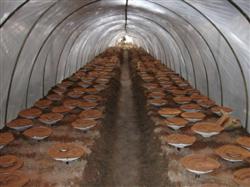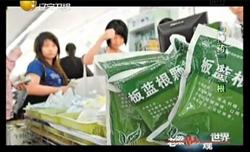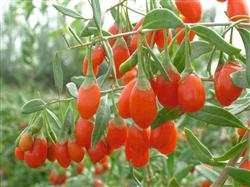Where are the high-yield cultivation techniques of Ganoderma lucidum?

Where are the high-yield cultivation techniques of Ganoderma lucidum? How to grow Ganoderma lucidum to produce high yield? There are Ganoderma lucidum high-yield planting techniques for reference: Ganoderma lucidum, also known as Ganoderma lucidum grass, fairy grass. It is a kind of valuable large medicinal fungus, which is used for medicine with its fruiting body and spores, and has the effect of nourishing fitness and prolonging life. It can treat neurasthenia, chronic bronchitis, stomach disease, liver disease, hypertension, diabetes, coronary heart disease and other diseases in clinic. Combined with the treatment of tumor, the side effects caused by radiotherapy and chemotherapy can be reduced. Regular administration of Ganoderma lucidum spore powder can significantly improve human disease resistance, enhance immunity and reduce the probability of disease. Therefore, planting, research and development of Ganoderma lucidum products is a very meaningful work to benefit society and improve people's health. The techniques of artificial high-yield cultivation of Ganoderma lucidum are introduced as follows in order to get rich together. First, the construction of Ganoderma lucidum shed: the planting mode adopts three ways: indoor shelf structure, Lentinus edodes shed transformation of Ganoderma lucidum shed and construction of Ganoderma lucidum shed. The construction of a reasonable Ganoderma lucidum shed is an important factor for the high yield of Ganoderma lucidum. According to the biological characteristics of Ganoderma lucidum, the Ganoderma lucidum greenhouse with heat preservation, moisturizing, good ventilation, proper light, smooth drainage and convenient management and operation is selected, which requires that the floor of the Ganoderma lucidum shed is clean, and the walls are smooth and moisture-resistant. The size of the Ganoderma lucidum shed depends on the number of culture materials. It is most appropriate to build the Ganoderma lucidum shed in front of the village with shade and close to the water source. The culture material should be strictly disinfected before entering the shed. Every cubic meter of space should be sealed and fumigated with formaldehyde 5ml and potassium permanganate 10g for 24 hours. Sheds can be built for planting in cities and villages all over the country, and the natural temperature is used in North China and Huang-Huai regions. spring seed is the best from April to May, and summer seed is the best from September to October. Second, the selection of the formula of cultivation materials: Ganoderma lucidum needs all kinds of nutrients in the process of growth and development, and the scraps of agricultural and sideline products are very rich, so we can use local materials according to local conditions and choose the formula suitable for the region. 1. 77% of cottonseed hull, 10% of wheat bran, 10% of corn meal, 1% of sugar, 1% of phosphate fertilizer and 1% of gypsum. two。 Cottonseed hull 89%, wheat bran 10%, gypsum 1%. 3. Sawdust 70%, wheat bran 25%, soybean powder 2%, phosphate fertilizer 1%, gypsum 1.5% and sugar 0.5%. 4. Cottonseed hull 79%, corn meal 20%, gypsum powder 1%. 5. 50% corncob, 35% sawdust, 15% wheat bran. Third, the production of cultivation materials: when preparing cultivation materials, first mix cottonseed hull, sawdust, wheat bran, gypsum powder and other materials evenly, with a water content of 60%-65%. It is better to clench fingers without dripping water when clenching with hands. After the material is mixed, it can be bagged by a bagging machine. The specifications of plastic bags can be polypropylene or polyethylene cylinder bags of 15cm × 35cm or 17cm × 33cm, each bag of dry material 400g ~ 450g. Polyethylene bags were sterilized under atmospheric pressure for 10 ~ 12 hours, polypropylene bags were sterilized under high pressure and kept for 2 hours. When the material was cooled below 30 ℃, it was inoculated in the aseptic room. Generally, a bottle of wheat seed can be received in 40 ~ 45 bags, and a bottle of cottonseed hull cultivation can be fed in 25 ~ 35 bags. The inoculated bacterial bag is moved into the sterilized culture room and discharged in layers. Generally, each discharge is 6-8 stories high, and a pedestrian passage is left between the shelves. It is tipped up and down once a week, one is to balance the temperature, the second is to increase the oxygen in the bag to develop bacteria quickly, and the third is to check for the presence of green mold infection. Fourth, management technology: Ganoderma lucidum is a thermophilic fungus, which requires a higher temperature in the process of growth and development. The mycelial growth temperature was 26 ℃ ~ 28 ℃, the fruiting body grew best between 24 ℃ ~ 28 ℃, and the fruiting body could not develop normally when it was lower than 18 ℃. 1. During the germicidal stage, the culture room should be kept at 22 ℃ ~ 30 ℃, the air relative humidity should be 50%-60%, ventilation for half an hour every day, and the bacterial bag should be turned up and down every 5-7 days. When the mycelium reaches 2 / 3, move into the culture shed, loosen the opening of the material bag, gently lift it with your hand and leave a little gap. Astigmatism in the shed is appropriate to avoid direct strong light. Generally, after 25 ~ 32 days, the hyphae can be filled with material bags. The mycelia of individual material bags are unevenly developed and can be singled out. two。 Ganoderma lucidum management: when the mycelium is full, the two ends can be cut into round openings the size of a five-cent coin with a blade to facilitate the growth of Zhi. When leaving Ganoderma lucidum, the greenhouse temperature is maintained at 26 ℃ ~ 30 ℃, the air relative humidity is increased to 90% 95%, and scattered light and sufficient oxygen are provided. Keep a shallow water layer on the ground and spray water around the walls and space 3 ~ 4 times a day. Every day before 8: 00 a.m. and after 4: 00 p.m., open the door and change air through the vents. When the temperature is low, it will be ventilated from 12:00 to 14:00. The primordium expanded for 3 ~ 5 days, gradually formed a bacterial cap, increased spraying water to keep moisturizing, and spraying water to control the temperature if the temperature was too high. Poor ventilation is easy to produce deformed Ganoderma lucidum, when the malformed buds should be cut off in time. The cap is white → light yellow → yellow → reddish brown, the white edge of the cap basically disappears, the edge turns red, the cap begins to leathery, and the reddish-brown foggy spores are ejected on the back, indicating that the fruiting body of Ganoderma lucidum is mature and can be harvested in time (it usually takes 40 ~ 45 days from cut to harvest). 3. Harvest and post-harvest management: stop spraying water one week before Ganoderma lucidum harvest, close the ventilation door, and cover the floor with plastic film to collect the sporopollen. When harvesting Ganoderma lucidum, remove it from the base of the handle with scissors or gently pick it by hand, conditionally dry or sun-dry to 12% of the water content, and bag it in a dry room for preservation or sale. After harvesting Ganoderma lucidum, the old bacterial skin at the mouth of the bag is removed, and the culture bag is rearranged in the shed, the humidity is increased to 90% 95%, the temperature is still kept above 28 ℃, and the fruiting body can continue to grow on the original fungal stalk after a week. According to the previous stage of training and management, the second crop of Ganoderma lucidum can be harvested in about 25 ~ 30 days, generally 3 ~ 4 crops. Each kilogram of dry material can produce 130 ~ 150 grams of dried Ganoderma lucidum. Generally build a 25m2 Ganoderma lucidum shed, harvest 1000 kilograms of dried Ganoderma lucidum products, and the sales income is 20, 000 to 50, 000 yuan. The plastic bags are removed from the harvested culture materials and can be used as soil fertilizer after crushing. See more planting techniques of Ganoderma lucidum
- Prev

Lao Liang talks about "Divine Medicine" Banlangen HD Video
Click to get more planting techniques of Radix Isatidis
- Next

How to make Chinese wolfberry bear more fruit?
How to make Chinese wolfberry bear more fruit? Please introduce the method that Lycium barbarum is a deciduous vine shrub of Solanaceae, which blossoms twice in May-June and September-October every year, and matures one after another from August to December. In order to make Chinese wolfberry bear more fruit, it must be placed in a sunny place, resistant to drought and afraid of waterlogging. In addition to keeping the basin soil moist during the growing season, watering should be strictly controlled. Note.
Related
- Fuxing push coffee new agricultural production and marketing class: lack of small-scale processing plants
- Jujube rice field leisure farm deep ploughing Yilan for five years to create a space for organic food and play
- Nongyu Farm-A trial of organic papaya for brave women with advanced technology
- Four points for attention in the prevention and control of diseases and insect pests of edible fungi
- How to add nutrient solution to Edible Fungi
- Is there any good way to control edible fungus mites?
- Open Inoculation Technology of Edible Fungi
- Is there any clever way to use fertilizer for edible fungus in winter?
- What agents are used to kill the pathogens of edible fungi in the mushroom shed?
- Rapid drying of Edible Fungi

